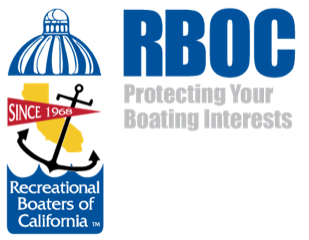RBOC and BoatU.S. are urging the State Water Resources Control Board to utilize sound science and site-specific testing as the critical path forward, and to resolve key boater concerns, prior to adoption of a proposed Nonpoint Source Program Implementation Plan.
Boating and the boating industry represent a significant recreational resource and an important part of California’s economy. Together, we have been engaged continually over many years to protect the environment as the state and regional boards have addressed impaired water bodies, have developed basin plans, and have developed new standards including anti-fouling paints for boat hulls.
RBOC and BoatU.S. are emphasizing several key points in our request to the State Water Board:
As stated in our July 10 comments, it is essential that stakeholders be engaged in the consideration of comprehensive plans such as this proposal, especially when they will have significant impacts. To the best of our knowledge, this has not occurred with the current proposal.
It is critical to boaters that any decisions that restrict or prohibit the use of anti-fouling paints containing copper be predicated on clear findings that alternatives are available, effective and affordable. However, at this time, no single alternative will work, boat paint formulations are constantly changing, and non-biocidal paint safety has not been confirmed.
Current TMDL models are ineffective as management tools yet adaptations to those models are practically impossible to achieve. Updated science is overlooked.
The recreational boating community and industry are challenged by the absence of coordination among the regulatory entities including the State Water Board, regional water boards, and the Department of Pesticide Regulation. This impacts numerous issues ranging from the available paints, the models for managing water quality, the appropriate monitoring schemes, and the interconnection among toxicity labs.
Background levels of copper confound the ability to achieve numerical standards. High background levels of dissolved copper in hydraulically connected waters make achieving the numerical limit impossible.
The Los Angeles Regional Water Quality Control Board should not issue an investigative order and should not develop conditional WDRs for the discharge of biocides from boats residing in marinas until the boating community has a feasible, reasonable and readily-available alternative non-biocidal anti-fouling paints. RBOC and BoatU.S. remain committed to the protection and enhancement of the state’s waterways.
These and other public comments have been prepared and submitted to the State Water Board by a number of stakeholders representing the recreational boating community including boaters, clubs and industry.
RBOC is endorsing and urging consideration of the comments, concerns and requests set forth in the public comments of the Marine Recreation Association comment letter dated July 29, the Moffatt and Nichol Memorandum “Review of Non-copper-based Alternative Antifouling Paints to Support Discussion on Implementation Strategies for Reducing Copper by Boat-Paint Conversions” dated July 29, and the ChemMetrics comment letter dated July 29.
